Tunic of “St. Peter” from the Sancta Sanctorum
Artist: Unknown
Date: ca. III or IV century
Classification: Vestments & Accessories
Dimensions: 130 x 183 cm
Materials: Wool and Linen
Adopted By: The Florida Chapter
Total Cost: € 43,900
Description
The tunic comes from the treasure of the Sancta Sanctorum, the private chapel of the Popes located in the ancient Patriarchium of the Lateran, official residence of the pontiffs from the first half of the fourth century until the transfer of the papacy to Avignon (1309-1377). On returning to Rome, the edifice had become unusable, and the Popes moves their residence to the Vatican, initiating the construction of the Apostolic Palace, and progressively increasing the complex in the following centuries.
Originally dedicated to St. Lawrence, in the ninth century the chapel was renamed the Sancta Sanctorum (“The Holy of Holies”), indicating the presence of numerous venerable relics of saints, safeguarded in an ark of cypress wood commissioned by Pope Leo III (795-816). It was protected by two thirteenth-century bronze doors and enclosed under the papal altar in a massive iron cage.
The ark had not been opened since 1521; Father Hartmann Grisar was able to view its contents in 1905, revealing a priceless treasure of reliquaries of gold, silver, ivory, and precious wood: cases, crosses, ciborium, textiles, embroidery, parchments, miniatures, and enamels.
The reliquaries, as well as the textiles, were transferred to the Christian Museum of the Vatican Library in 1906, then to the Vatican Museums in accordance with the Rescriptum of Pope John Paul II in 1999.
Among the various textile fabrics from the treasure of the Sancta Sanctorum are two robes, a chasuble and a tunic, inscribed in medieval inventories as belonging to St. John the Evangelist and St. Peter.
The ancient tunic could be presumed to be that of St. Peter, but the identification cannot be substantiated on historical basis. The article is made of linen mixed with wool; it is almost rectangular in shape, with white decorative lines present on the sides, sleeves and neck. Two strings are sewn on the right side of the tunic and on the wrist. Triangular sleeves are sewn and open under the arm. The simple “T” shape and the type of fabric refer to the models in use in the eastern Mediterranean area from the first to the fourth centuries and are depicted in ancient catacombs paintings.
String cords were added at the ends of the sleeves; these were for the exhibition of the relic. In Rome, there were relics of fabrics that had become the object of veneration since the early Middle Ages, as they were considered parts of clothing worn by Christ, the Virgin or the saints. Others, after touching venerated sepulchers, acquired sacred value as “contact” relics. The presence of numerous cuts on the tunic is attributable to the practice, widespread in ancient times according to testimonial sources, of cutting off portions of the cloth to be distributed as relics.
State of Preservation
The tunic, which has wool and linen blend, has been covered with an added red fabric. It is currently framed in glass. There are also many holes, deformations (such as wrinkles and raised areas), fabric warping and stains. On the whole surface there are discontinuous fragments.
Restoration Procedures
- Precise micro aspiration system for front and back
- Removal of previous restorations
- Restoration through vaporization
- Preparation for an adequate additional fabric
- Base dying
- Measures to strengthen item by stitching torn and missing areas from the additional fabric
- Creation and implementation of a filler fabric so as to give three-dimensionality to the original tunic
- Photographic documentation
Detail
Inventory N°: 61307
Artist: Unknown
Date: ca. III or IV century
Dimensions: 130 x 183 cm
Materials: Wool and Linen
Department:
Decorative ArtsLaboratories:
Tapestry and TextilesWishbook year: 2019
Total Cost
€ 43,900
Restoration Report of the Tunic of "St. Peter"
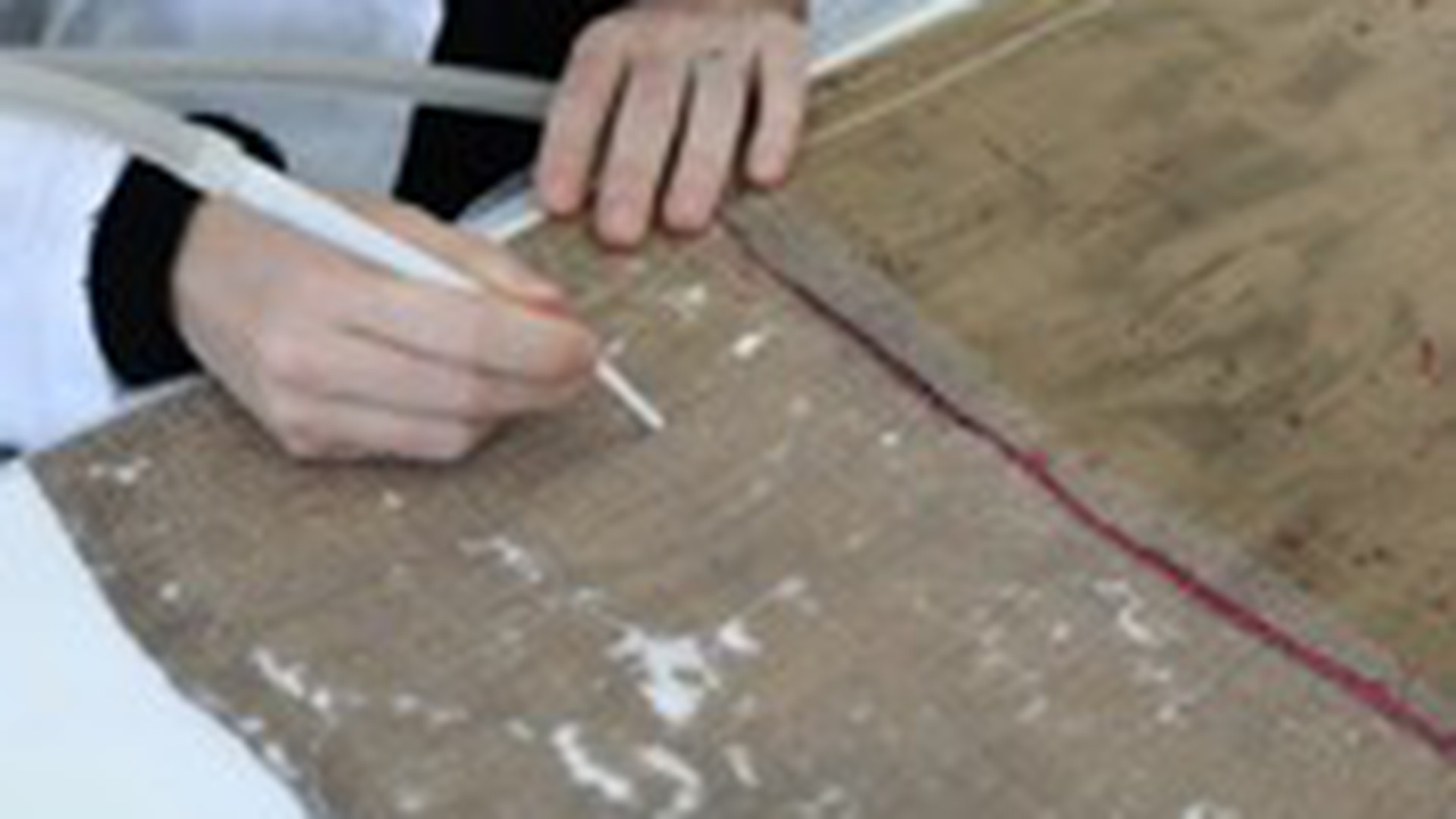
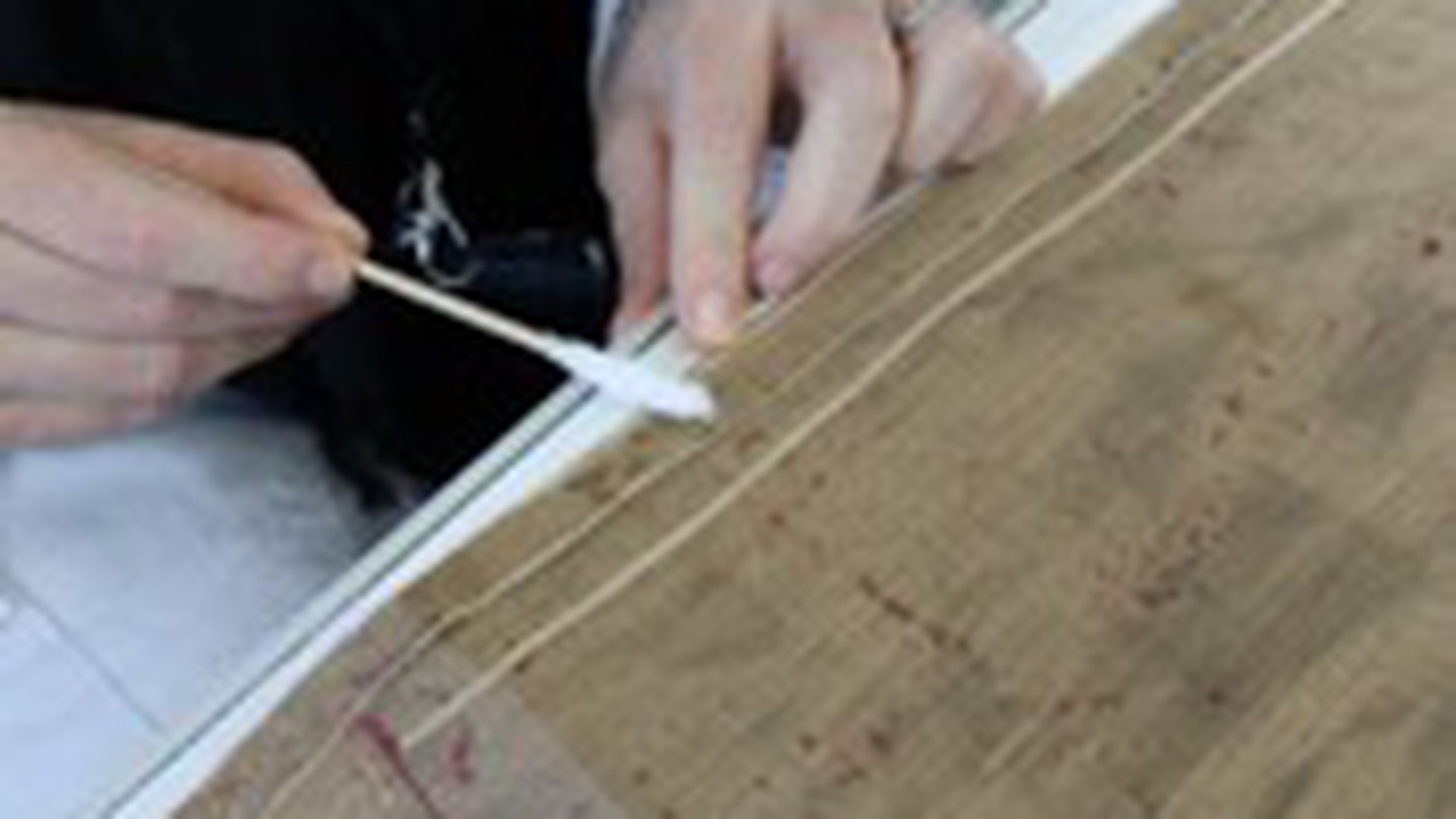
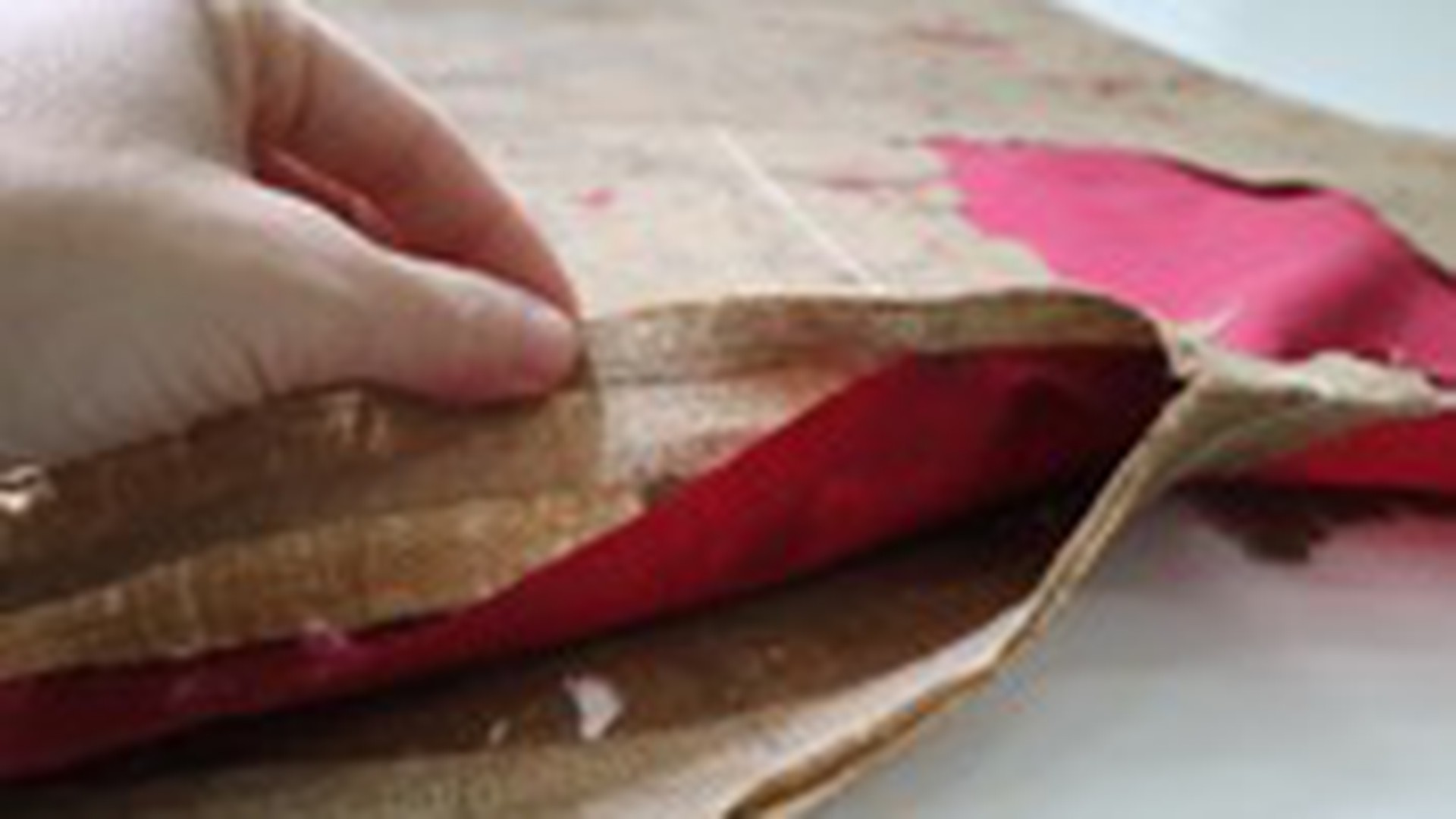
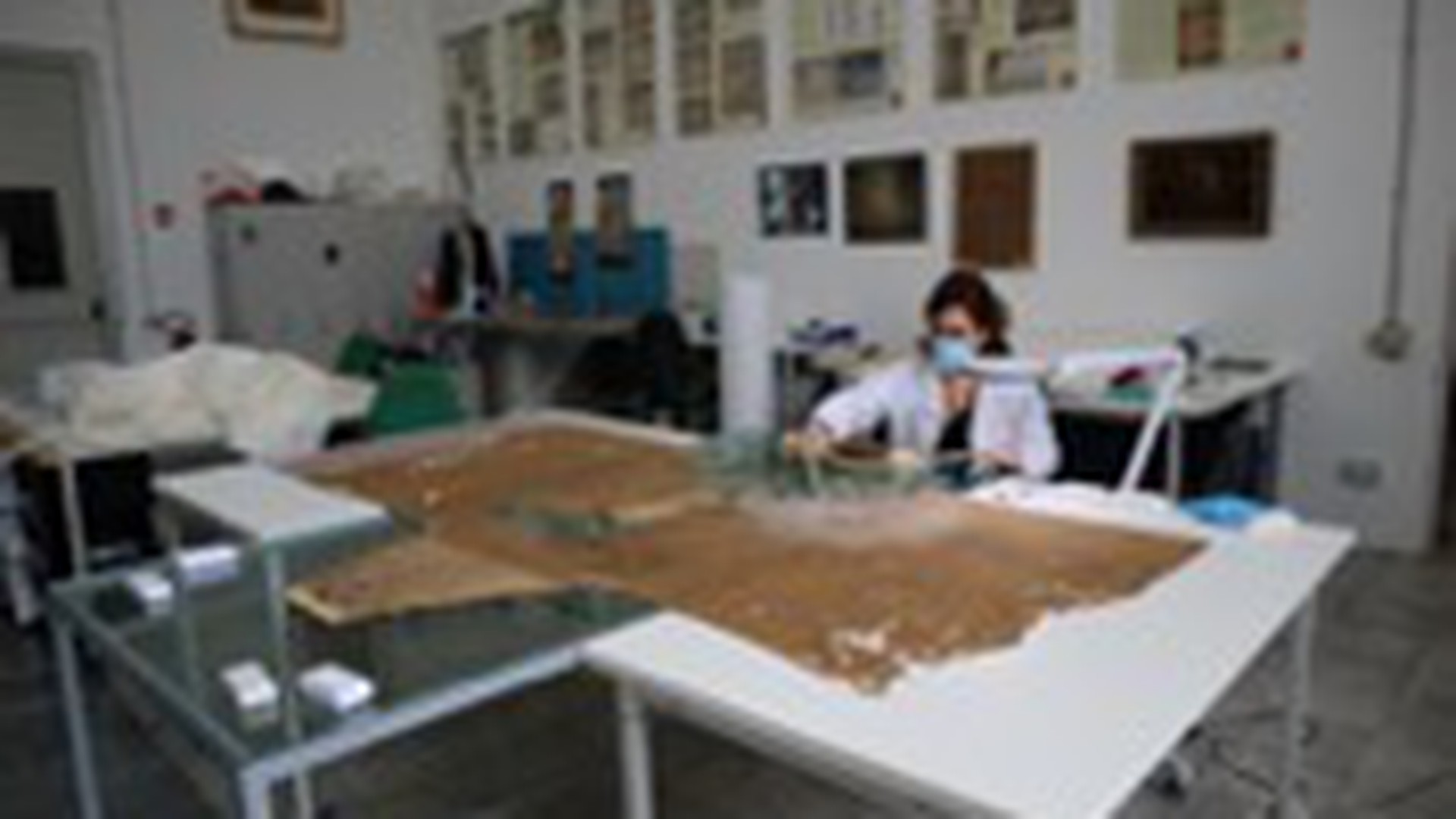

The restoration progress until March 2021
The restorers removed the glass from the wooden frame as the first operation.
Secondly, a disinfestation process took place. Afterwards, restorers removed some incoherent particles with a micro aspirator to remove the dust. This intervention took place on the back and front of the artifact. Along the perimeter, restorers removed small adhesive transparent fragments with the use of water and 50% alcohol solution.
Restorers removed the perimeter seams, which made it possible to open the tunic and remove the inside red lining with small transparent adhesives. Then, restorers vacuumed the entire interior.
The following operation deformed all of the folds present with the utilization of an ultrasound vaporizer with PH neutral deionized water and glass weights. The fabric chosen as a support for the consolidation is a linen cloth appropriately dyed in color.
The fabric chosen as a support for the consolidation is a linen cloth appropriately dyed in color. The fabric for the surface protection of the tunic is a silk crepeline also dyed in color. Once the linen support fabric was in place, the restorers consolidated the lacerated areas by sewing with color-dyed silk yarn.

Tunic of “St. Peter” from the Sancta Sanctorum
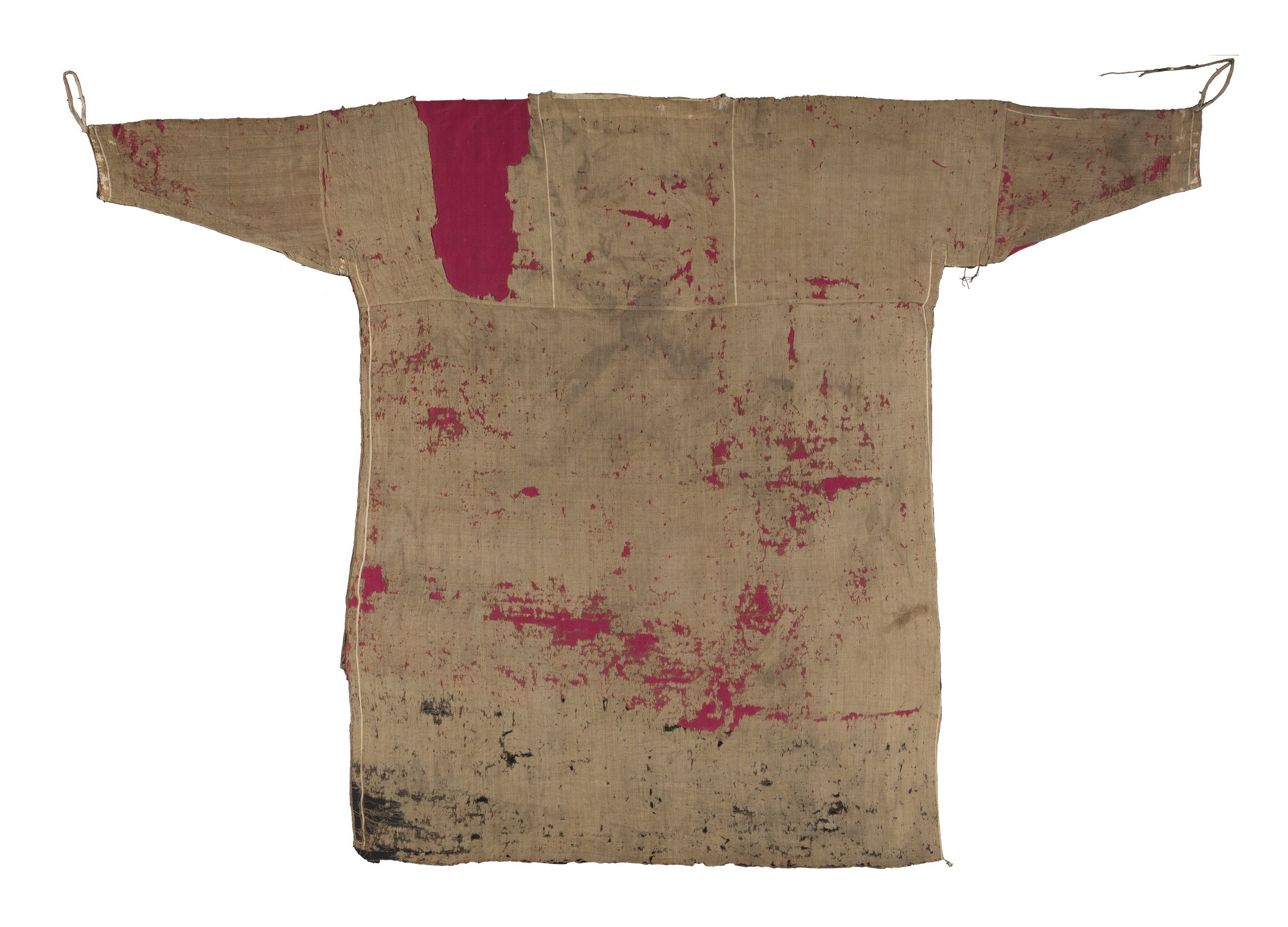
Details
Adopted by: The Florida Chapter
Patrons: Mr. Richard Smith
Inventory: 61307
Artist: Unknown
Date: ca. III or IV century
Classification: Vestments & Accessories
Materials: Wool and Linen
Dimensions: 130 x 183 cm
Department: Decorative Arts
Laboratory: Tapestry and Textiles
Wishbook year: 2019
Description
The tunic comes from the treasure of the Sancta Sanctorum, the private chapel of the Popes located in the ancient Patriarchium of the Lateran, official residence of the pontiffs from the first half of the fourth century until the transfer of the papacy to Avignon (1309-1377). On returning to Rome, the edifice had become unusable, and the Popes moves their residence to the Vatican, initiating the construction of the Apostolic Palace, and progressively increasing the complex in the following centuries.
Originally dedicated to St. Lawrence, in the ninth century the chapel was renamed the Sancta Sanctorum (“The Holy of Holies”), indicating the presence of numerous venerable relics of saints, safeguarded in an ark of cypress wood commissioned by Pope Leo III (795-816). It was protected by two thirteenth-century bronze doors and enclosed under the papal altar in a massive iron cage.
The ark had not been opened since 1521; Father Hartmann Grisar was able to view its contents in 1905, revealing a priceless treasure of reliquaries of gold, silver, ivory, and precious wood: cases, crosses, ciborium, textiles, embroidery, parchments, miniatures, and enamels.
The reliquaries, as well as the textiles, were transferred to the Christian Museum of the Vatican Library in 1906, then to the Vatican Museums in accordance with the Rescriptum of Pope John Paul II in 1999.
Among the various textile fabrics from the treasure of the Sancta Sanctorum are two robes, a chasuble and a tunic, inscribed in medieval inventories as belonging to St. John the Evangelist and St. Peter.
The ancient tunic could be presumed to be that of St. Peter, but the identification cannot be substantiated on historical basis. The article is made of linen mixed with wool; it is almost rectangular in shape, with white decorative lines present on the sides, sleeves and neck. Two strings are sewn on the right side of the tunic and on the wrist. Triangular sleeves are sewn and open under the arm. The simple “T” shape and the type of fabric refer to the models in use in the eastern Mediterranean area from the first to the fourth centuries and are depicted in ancient catacombs paintings.
String cords were added at the ends of the sleeves; these were for the exhibition of the relic. In Rome, there were relics of fabrics that had become the object of veneration since the early Middle Ages, as they were considered parts of clothing worn by Christ, the Virgin or the saints. Others, after touching venerated sepulchers, acquired sacred value as “contact” relics. The presence of numerous cuts on the tunic is attributable to the practice, widespread in ancient times according to testimonial sources, of cutting off portions of the cloth to be distributed as relics.
State of Preservation
The tunic, which has wool and linen blend, has been covered with an added red fabric. It is currently framed in glass. There are also many holes, deformations (such as wrinkles and raised areas), fabric warping and stains. On the whole surface there are discontinuous fragments.
Restoration Procedures
- Precise micro aspiration system for front and back
- Removal of previous restorations
- Restoration through vaporization
- Preparation for an adequate additional fabric
- Base dying
- Measures to strengthen item by stitching torn and missing areas from the additional fabric
- Creation and implementation of a filler fabric so as to give three-dimensionality to the original tunic
- Photographic documentation
Media

tunica
Restorations Update: Restoration Report of the Tunic of "St. Peter"
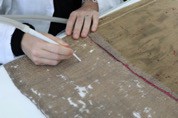
The restoration progress until March 2021
The restorers removed the glass from the wooden frame as the first operation.
Secondly, a disinfestation process took place. Afterwards, restorers removed some incoherent particles with a micro aspirator to remove the dust. This intervention took place on the back and front of the artifact. Along the perimeter, restorers removed small adhesive transparent fragments with the use of water and 50% alcohol solution.
Restorers removed the perimeter seams, which made it possible to open the tunic and remove the inside red lining with small transparent adhesives. Then, restorers vacuumed the entire interior.
The following operation deformed all of the folds present with the utilization of an ultrasound vaporizer with PH neutral deionized water and glass weights. The fabric chosen as a support for the consolidation is a linen cloth appropriately dyed in color.
The fabric chosen as a support for the consolidation is a linen cloth appropriately dyed in color. The fabric for the surface protection of the tunic is a silk crepeline also dyed in color. Once the linen support fabric was in place, the restorers consolidated the lacerated areas by sewing with color-dyed silk yarn.
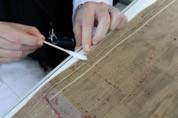
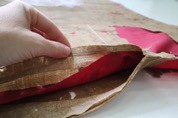

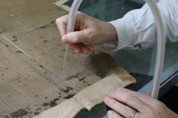

© 2025 Patrons of the Arts
in the Vatican Museums
Vatican Museums V-00120,
Vatican City State (Europe)
+39 0669864499
